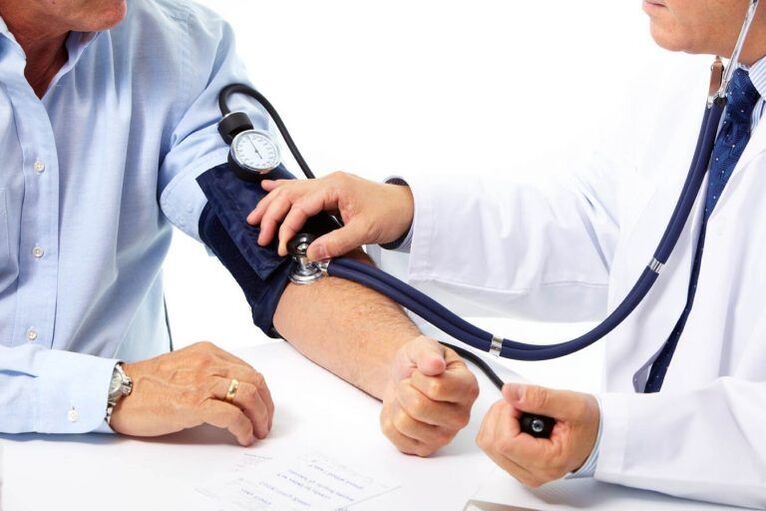
Hypertonic disease is the most common disease of the circulatory system worldwide. About 30% of the world's population suffers from this ailment. In recent years, a significant "rejuvenation" of the disease has been observed, among the sick, more and more young people of young Middle Ages.
Hypertension is full of heavy and disabled complications, often leads to death. At the same time, subject to a series of rules, the occurrence and development of the disease can be delayed for years. Each person must be familiar with the risk factors for the development of hypertension, their symptoms and principles of treatment.
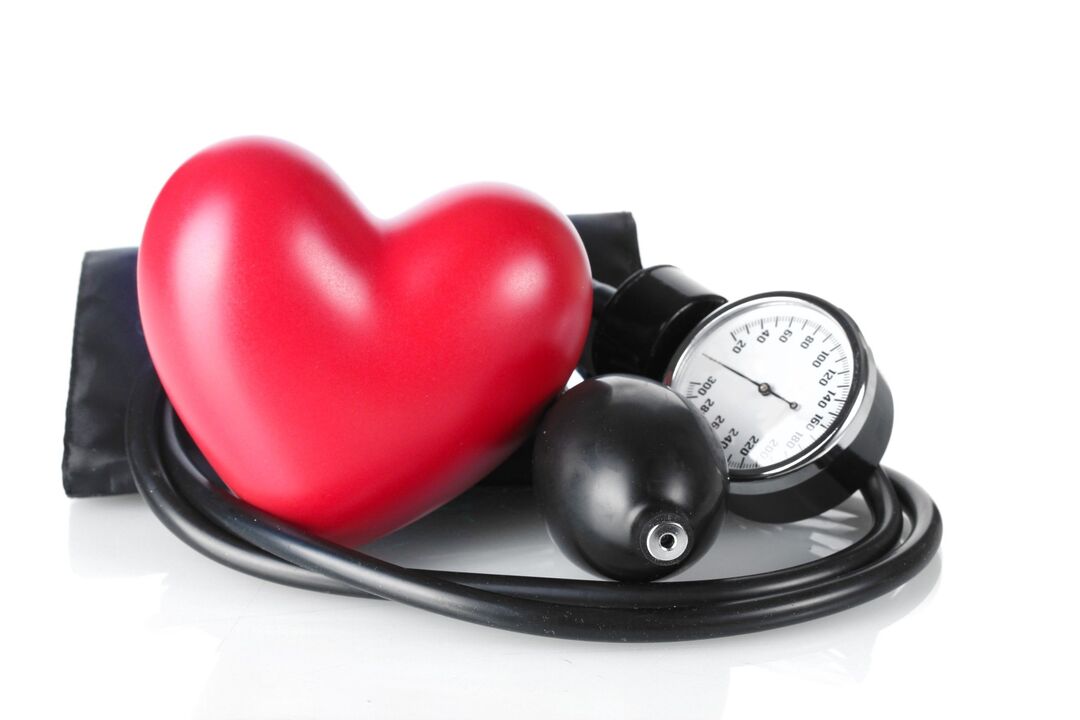
What is hypertension?
Hypertonic disease or arterial hypertension (synonym: essential hypertension, primary hypertension): chronic procedure, prone to progression, in the clinical image of which the main symptom is a persistent and prolonged increase in blood pressure (that is, arterial hypertension syndrome).
The criteria for arterial hypertension is considered the systolic blood pressure (blood pressure) from above or equal to 140 mm Hg. Art. and/or diastolic blood pressure greater than 90 mm Hg. Art.
ETIOLOGY OF THE DISEASE
Hypertonic disease is considered an idiopathic disease, the immediate causes of its occurrence are not established.
Among the numerous theories of the appearance and development of primary hypertension, classical neurogenic theory is more widespread. This concept considers hypertension as a neurotic state of greater nervous activity. The initial mechanism is considered nervous (sharp or prolonged, chronic), which causes a violation of the trophism of brain structures that are responsible for the regulation of blood pressure. Of particular importance are the emotions that have not received implementation in the engine sphere, the "emotions without reacting" called like this.
In the appearance of primary hypertension, a genetic predisposition is drawn. In 35-50% of people suffering from hypertension, the family nature of the disease is observed. A specific gene has not been detected, whose defect would lead to a persistent increase in blood pressure. Probably, the disease has a type of polygenic inheritance.
Hypertension pathogenesis
The pathogenesis of primary hypertension is complicated and at different stages it has its own characteristics. According to neurogenic theory, under the influence of nervous survival, the inhibitory effect of the cortex of the large brain hemispheres in subcortical vegetative centers (hypothalamic) is reduced, which causes the activation of the presor sympathetic system (vasoconstrictor). There is an adrenaline emission, cardiac ejection increases, arteries are reduced (including renal), blood pressure increases. The spasm of the renal arteries active another powerful pressing-river-angio-aldosterone system, which makes its significant contribution to the increase in blood pressure. Other vasoconstrictive agents are also connected with time: antidiuretic hormone, prostacilla, endothelin, thromboxan. They oppose depressing vascular prostaglandins, vascular prostaglandins, kallikrein-kinina and a sodium reufficiency system. A long spasm of the arteries leads to a violation of the function of its internal shell (endothelium), restructuring the walls of blood vessels and contributes to the development of atherosclerosis.
Risk factors
Risk factors are attributed to signs, whose presence in humans increases the probability of developing the disease. The variety of risk factors for primary hypertension is divided into two groups, modified and not modified.
Non -modified risk factors (it is impossible to influence them)
These include:
- The male sex is among the men of the incidence of young and medium -sized hypertension than among women at the same age. The low incidence in women is explained by the protective effect of estrogen. The prevalence of hypertension in representatives of both sexes over 60 are approximately the same;
- Age (more than 50-60 years): the prevalence of hypertension increases sharply in old age;
- HERITY: The presence of cases of essential hypertension in a family increases the risk of the disease.
Modified risk factors (subject to influence)
These include:
- Smoking: Nicotine has a powerful vasoconstrictor effect. Active and passive smoking leads to blood vessel cramps, blood pressure increased;
- Obesity, that is, the body weight index is greater than 30 kg/m2. Clinical studies show that the incidence of hypertension increases as human weight grows. The deposition of subcutaneous fat in the waist area (abdominal obesity) is especially dangerous, because it is associated with an extremely high risk of primary hypertension. This is due to the stimulation of the sympathetic adrenal system in fat people. A waist of a waist of more than 80 cm for women and more than 94 cm for men is a serious risk factor for hypertension;
- A sedentary lifestyle (hypodinamia): insufficient physical activity causes the development of obesity;
- Excess of table salt with food products (more than 5 g per day);
- excessive drinking (more than 30 g of ethyl alcohol per day);
- Unbalanced diet (high heat, with an excess of saturated fats) - causes obesity;
- Stressful situations.
Classification of arterial hypertension
Primary hypertension is classified according to the level of arterial hypertension, by the nature of the lesion of the target organs.
Classification of arterial hypertension levels (AG)
Sistolic blood pressure category, mm Hg. Art. Diastolic blood pressure, mm Hg. Art.
- Arterial hypertension I Grades 140-159 90-99
- Arterial hypertension of grade II 160-179 100-109
- Arterial hypertension of grade III ≥180 ≥110
Classification by the nature of the defeat of the objective organs
Mishenian organs are called those organs in which pathological changes arise mainly due to hypertension. For primary hypertension, the objectives are heart, kidneys, brain, eye mesh shell, blood vessels.
3 stages of primary hypertension
It is usual to distinguish 3 stages of primary hypertension:
Stage i-Characterized by the absence of changes in the objective organs;
Stage II-The changes in the objective organs that are not manifested by any symptoms:
- heart: an increase in the left ventricle (according to the results of ECG or ultrasound of the heart);
- Ships:signs of swelling of the walls, the presence of plates (according to the results of the ultrasound, the angiography);
- kidneys:decrease in function, microalbuminuria (detection of small portions of protein in the urine);
- The retina: narrowing, impregnation of blood vessels;
Stage III-The symptoms of the changes of the organs objective:
- heart: Ischemic disease, heart failure;
- brain: transient disturbance of cerebral blood flow, stroke;
- kidneys:kidney failure;
- Ships: occlusion of the peripheral blood vessel, which delays aortic aneurysm;
- Retter of the Eye:Edema, hemorrhages, exudated.
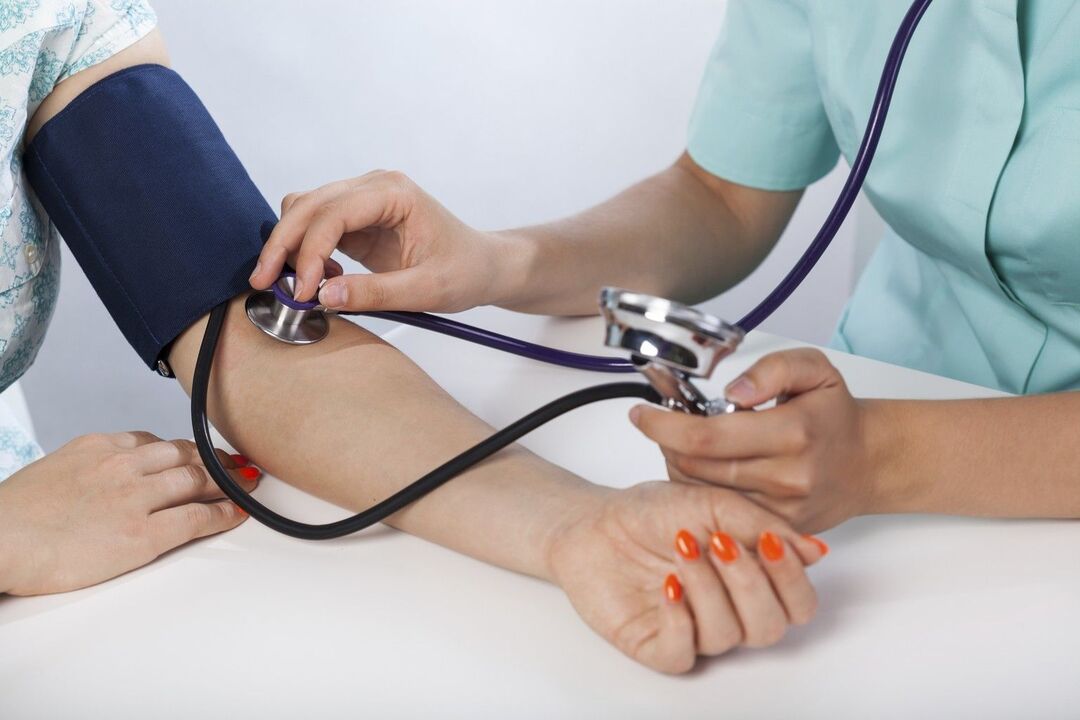
Symptoms of hypertension
In some cases, for a long time the only symptom of essential hypertension remains an increase in blood pressure. It can be accompanied by non -specific complaints of head pain (it occurs in the morning, by the type of "heavy head", with location in the occipital region), irritability, excessive fatigue, sleep alterations, general weakness, dizziness and rapid palpitations.
Hypertonic crises are considered a brilliant sign of the disease-short (from 1 to 2 hours to 2-3 days) of the exacerbation of the disease, manifested by a sudden increase in blood pressure. They occur in approximately one third of patients.
There are 2 types of crisis for hypertension: first order (adrenal) and second order (norepinephrine).
The first -order hypertensive crisis develops more often in middle -aged people. The increase in blood pressure occurs at night, accompanied by headache, chills, cooling of the limbs, anxiety, anxiety, a rapid beat.
A second -order hypertensive crisis is characteristic of the elderly. The increase in blood pressure is accompanied by a pronounced headache, deteriorated visual perception, inhibition, drowsiness, nausea, vomiting.
With a prolonged experience of hypertension in the clinical picture, the main place is occupied by the symptoms of the diseases of the organs target: rag pain with angina sinory, lack of breath, swelling with heart failure, symptoms of a stroke, etc.
Hypertension diagnosis
To establish a diagnosis of hypertension to a person, it is necessary to identify a persistent increase in blood pressure and exclude the presence of other diseases that are characterized by blood hypertension syndrome.
An increase in blood pressure is determined using a conventional tonometer; Hell is measured by a doctor or the patient himself. An indispensable condition is to comply with the methodology of measuring blood pressure: the measurement is carried out after 3-5 minutes of rest in a comfortable environment, sitting, at rest, the shoulder and the heart must be located at the same level. The blood pressure level or equal to 140/90 mm Hg. Art. Talk about suspicion of essential hypertension. In diagnostically complex cases, the daily monitoring methodology of blood pressure is used.
Diseases that accompany high blood pressure
In addition to hypertension, there are still a series of diseases accompanied by an increase in blood pressure: renal pathology (pylo-/chronic glomerulonephritis), vasoral hypertension (caused by the narrowing of the renal artery), adrenal tumor disease (conndomocytromocytromocytromocytoma, aortic dysloma (preparation of the vibrena of the vibration). Syndrome, disease.
An additional examination aims to detect pathologies of the objective organs. It allows you to clarify the hypertension stage, prescribe the appropriate treatment.
Diagnostic measures include:
- ECG: There may be signs of an increase in the left ventricle (hypertrophy), ischemic changes, signs of an acute myocardial infarction.
- X -Ray of the thorax organs: changes in the contour of the heart can be detected (manifestation of hypertrophy of the left ventricle);
- Echocardiography (heart ultrasound): It can be detected by left ventricular hypertrophy, expansion of cardiac cavities, a decrease in their work;
- Study of the background: the narrow arteries of the retina, the dilated veins, in the posterior stages: bleeding, exudates, swelling are determined;
- Blood outstanding: the amount of cholesterol, the guys of the kidneys (creatinine, urea) are determined;
- Urine analysis: kidney functioning disorders, microalbuminuria, etc. are detected.
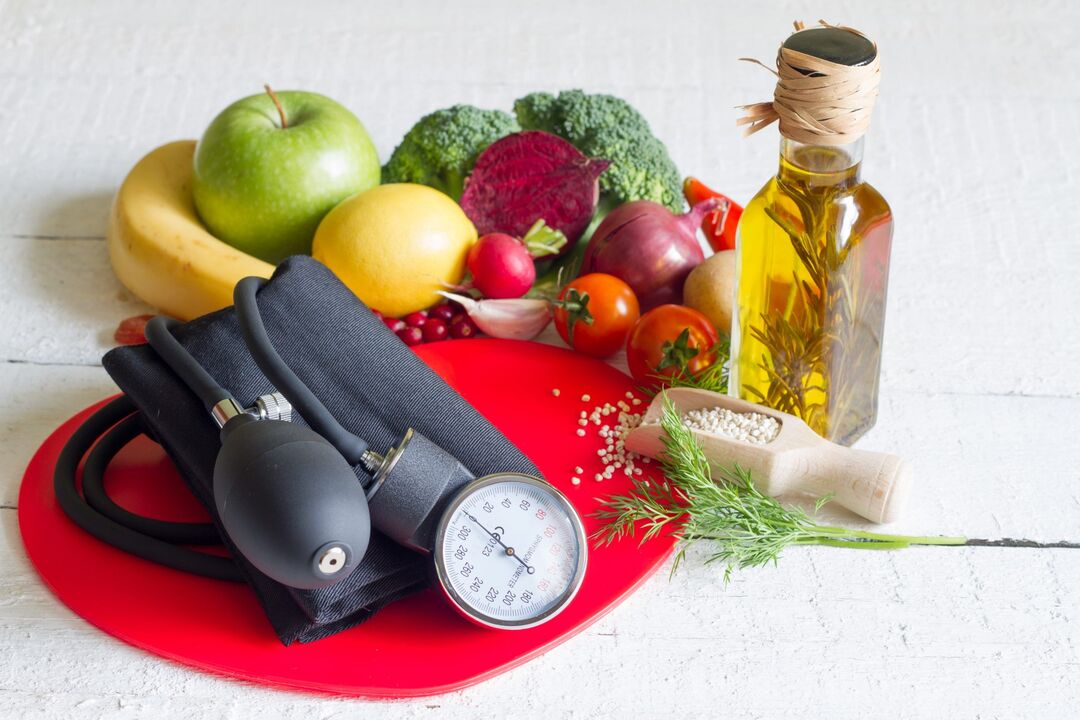
Hypertension treatment
In the treatment of primary hypertension, drugs of drugs and drugs that complement each other are used successfully.
Non -fragments to treat arterial hypertension
All patients with hypertension are absolutely prescribed, even if a person receives medicines to control blood pressure. These measures imply the elimination of risk factors by modifying the established lifestyle and human habits. Scientists have shown that treatment without funds in certain cases is not lower than drug treatment.
The main instructions:
- Limit the amount of table salt from food (up to 5-6 g per day). This implies a complete rejection of foods such as sausages, sausages, salty cheeses, canned foods, salted fish. It should also be taken into account that a significant amount of salt is contained in bakery products;
- The fight against overweight: people suffering from primary hypertension, it is recommended to reduce the calorie content of the food diet by limiting the use of fats;
- Restriction of the use of drinks containing alcohol, up to 30 g of ethyl alcohol per day;
- A complete and strict negative of smoking, if necessary, resort to the help of a narcologist;
- Regular physical activity is moderate, preferably daily, that lasts at least half an hour. Events are preferred in fresh air: jog, walk at an accelerated pace, cycling.
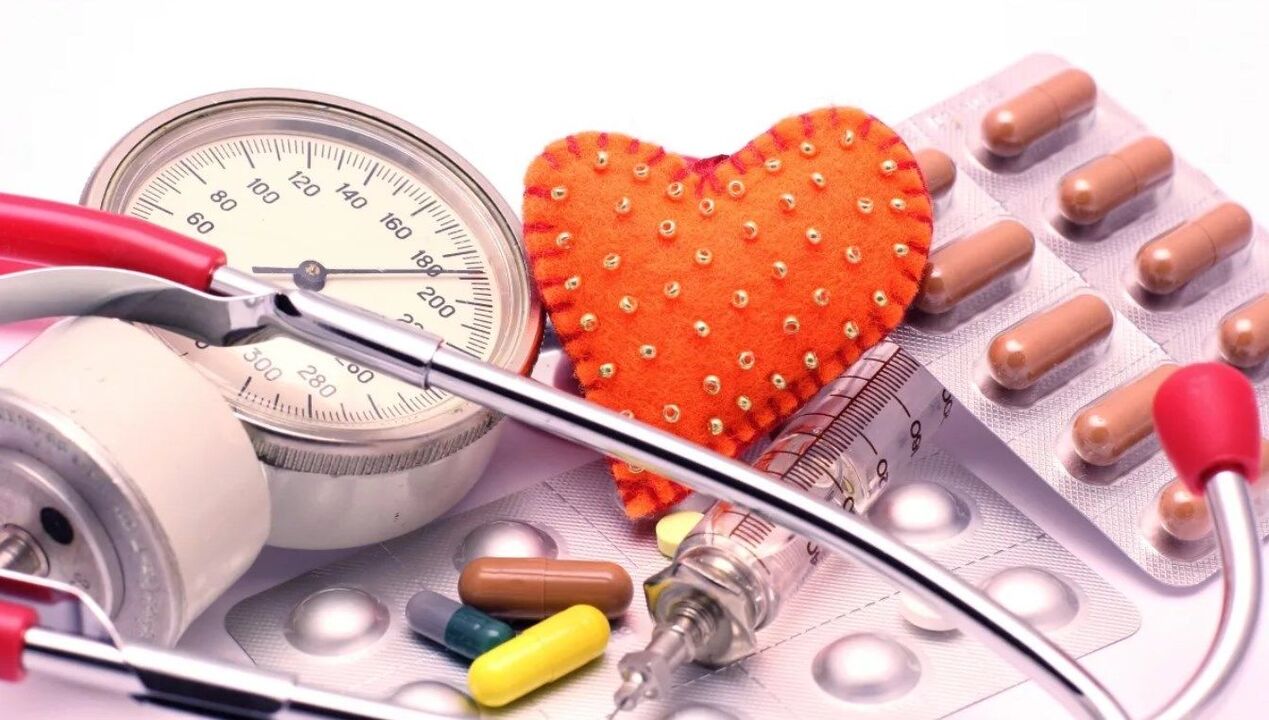
Pharmacological treatment of arterial hypertension
It implies the use of drugs.
For the effective treatment of primary hypertension, experts recommend several kinds of medications, reduce blood pressure, which affect the different stages of disease pathogenesis.
Main Drug Classes:
- Enzyme angiotenzinoprodecedora inhibitors - IAC;
- Angiotensin receptors: partans;
- calcium antagonists;
- diuretics;
- blockers;
- Renin inhibitors;
- central action drugs (brain);
- ALFA BLOCATORS.
Drug combinations for the treatment of arterial hypertension
In the treatment of hypertension, the combinations of drugs of several groups are widely used, for example, IACD + diuretic, calcium antagonist + IACF, -Block + diuretic Sartan + Sartan. The modern pharmaceutical industry produces a large number of combined medications ready, which greatly simplifies medication.
It should be noted that the treatment of hypertension is carried out under the continuous control of a doctor-therapist or a cardiologist. The doctor determines the volume of medical measures, the time to prescribe medications, dose, etc.
The independent prescription of antihypertensive medications is unacceptable. With the development of malignant hypertension, which is not susceptible to the effects of drugs, the surgical treatment of hypertension can be performed (stimulation of carotid sinus baroreceptors, renal denervation, etc. ).
Hypertension prevention
Primary hypertension prevention must be carried out from childhood. Children, adolescents and young people must regularly submit medical exams with the measurement of blood pressure. Prevention should affect disease risk factors. Children are shown a rational muscle load, supercharging, excessive salted food consumption is unacceptable. Secondary prevention aims to prevent the progression of the disease. People who suffer from hypertension are contraindicated at night, overtime work, as well as conjugated with nerve overloads.


















